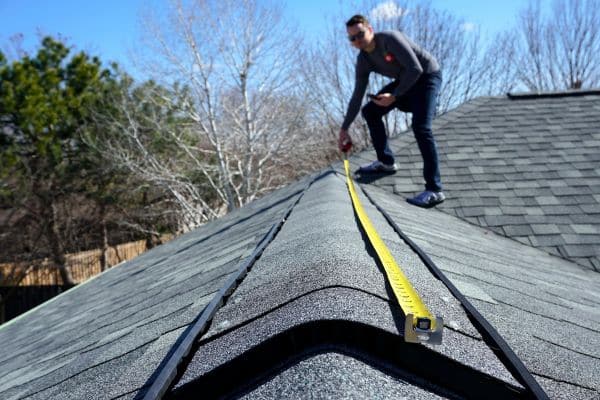Roofing Inspections: 10 Key Areas Every Pro Inspects
Introduction
If you’re a homeowner in Franklin or Bellingham, MA, with concerns about your roof, you’re likely searching for answers about roofing inspections. Here’s what you need to know right away:
- What is a roofing inspection? A thorough examination of roofing components to determine current performance and any needed repairs.
- Why is it important? Regular inspections help prevent major repairs, extend the life of your roof, and ensure your home is protected.
- Who can help? Roof Experts offers professional, detailed inspections for Massachusetts homeowners backed by over 20 years of experience.
Every roof faces challenges from weather, aging, and wear and tear. Roof inspections aren’t just about fixing current problems but also about preventing future ones. At Roof Experts, we understand the critical role a well-maintained roof plays in protecting your home and family.
When you choose us, you’re opting for a team that prioritizes your peace of mind with comprehensive services, competitive pricing, and a commitment to high-quality workmanship. Let’s dive deeper into how we master roof inspections to keep your home safe and secure.

What is a Roof Inspection?
Roof inspections are thorough examinations of your roof’s condition to ensure it performs its job effectively. Think of it as a health check-up for your home’s hat.
Definition
A roof inspection involves a detailed assessment of all roofing components, both on and in your home. The goal is to identify any issues that might compromise the roof’s integrity and to determine what needs to be done to fix them.
Purpose
The primary purpose of a roof inspection is to maintain the roof’s functionality and extend its lifespan. This includes:
- Detecting Damage Early: Identifying problems before they escalate into costly repairs.
- Ensuring Safety: Making sure your roof can withstand harsh weather conditions.
- Preventing Leaks: Spotting potential leaks that could damage your home’s interior.
Components
During a roof inspection, several key areas are examined to ensure everything is in good shape:
- Shingles: Inspectors look for missing, broken, or torn shingles. These can allow water to seep into your home.
- Flashing: This is the metal or plastic material that directs water away from joints and seams. Damaged flashing can lead to leaks.
- Gutters and Downspouts: Properly functioning gutters and downspouts prevent water from pooling on the roof and causing damage.
- Roof Penetrations: This includes anything that creates a hole in your roof, like vent pipes and chimneys. Inspectors check seals and flashing around these penetrations.
- Soffits and Fascia: These are the boards that connect your roof to the walls of your home. Inspectors ensure they’re not rotting or damaged.
- Attic: If accessible, the attic is checked for signs of water damage or leaks.
Real-World Example
Imagine you’ve noticed a water stain on your ceiling. A roof inspection would help pinpoint the exact source of the leak, whether it’s a missing shingle, damaged flashing, or clogged gutter. Addressing these issues early can save you from more significant damage and expensive repairs later on.

Case Study
One of our clients in Bellingham, MA, had a “blind valley” where leaves would collect and cause water to dam up. During a routine inspection, we identified this issue and added extra waterproofing. This not only resolved the problem but also made it easier for the homeowner to clear out leaves, preventing future damage.
By understanding what a roof inspection entails and its importance, you can better appreciate the value it brings in maintaining your home’s safety and longevity. Up next, let’s explore when to schedule roofing inspections and the best times to do so.
When to Schedule Roofing Inspections
Knowing when to schedule roofing inspections can save you a lot of headaches and money. Here’s what you need to know:
Frequency
For the best protection, schedule a professional roof inspection at least once a year. This helps catch issues early before they become big problems. In Massachusetts, where Roof Experts operates, this is especially important due to the varying weather conditions.
Trigger Events
Certain events should prompt an immediate roof inspection:
- After Major Storms: High winds, heavy rain, or hail can cause significant damage.
- When Buying or Selling a Home: Ensure the roof is in good condition and won’t surprise you later.
- If You Notice Signs of Damage: Water stains, missing shingles, or sagging areas are red flags.
Seasonal Advice
Spring and Early Summer are ideal times for roofing inspections. This timing allows you to check for damage from winter storms, ice, and snow. Plus, it prepares your roof for the upcoming summer heat.
Fall is another good time. Inspecting before winter ensures your roof is ready to handle snow and freezing temperatures.
Regular inspections and timely checks after trigger events can help you maintain a healthy roof and prevent costly repairs. Next, we’ll dive into the key areas inspected during roofing inspections.
Key Areas Inspected During Roofing Inspections
When it comes to roofing inspections, inspectors focus on several critical areas to ensure your roof is in top shape. Let’s break down the key components they examine:
Shingles
Shingles are the first line of defense against the elements. Inspectors look for:
- Missing, Broken, or Torn Shingles: These can expose the underlying materials to water damage.
- Worn Away Shingle Granules: Granules protect shingles from UV rays. If they’re missing, your shingles are more vulnerable.
- Nail Holes: Small but significant, nail holes can lead to leaks. Often, only a trained eye can spot these.
Flashing
Flashing is crucial for diverting water away from joints and seams. Inspectors check for:
- Rusted or Missing Flashing: This can lead to water intrusion.
- Cracked or Missing Caulk: Essential for sealing the edges of flashing.
- Proper Installation: Ensuring flashing is up to code and functioning correctly.
Gutters
Gutters play a vital role in directing water away from your home. During an inspection, experts look for:
- Secure Attachment: Gutters should be firmly attached to avoid falling off or leaking.
- Clogs and Debris: Blocked gutters can cause water to overflow, leading to roof and foundation damage.
- Proper Functioning of Downspouts: Ensuring they direct water away from the home’s foundation.
Structural Integrity
The overall health of your roof also depends on its structural integrity. Inspectors will examine:
- Wood Rot or Sagging Areas: These are signs of severe water damage and can indicate a compromised roof structure.
- Attic Condition: Stains or water damage in the attic can pinpoint exactly where problems are occurring.
- Rotted or Torn Rubber Boots Around Pipes: These need to be intact to prevent leaks.
By focusing on these key areas, roofing inspections help identify potential issues early, saving you from costly repairs down the line. Next, we’ll explore the common issues identified in roofing inspections.
Common Issues Identified in Roofing Inspections
During roofing inspections, professionals often uncover a variety of common issues. Understanding these can help you address problems before they escalate.
Leaks
Water Stains: Brown or coffee-colored circles on your ceiling are often the first sign of a leak. Ignoring these can lead to extensive damage. Water stains can also appear around light fixtures or in the attic. Immediate action is crucial to prevent further deterioration.
Penetrations: Anything that penetrates your roof, like chimneys or skylights, can be a water entry point. Proper flashing and sealing are essential to prevent leaks.
Wear and Tear
Nail Holes: Not visible from the ground, nail holes in shingles can be detected only by a trained eye. These holes can lead to leaks and may require shingle replacement.
Debris: Leaves and other debris can act like sponges, soaking up water and causing damage to your roof deck. Regular cleaning is essential to prevent this issue.
Granule Loss: Over time, shingles lose granules due to weather impact. This makes them less effective at protecting your home.
Structural Damage
Rotten Wood: This is a significant sign of water intrusion. If not addressed, it can lead to severe structural issues. Rotten wood needs immediate repair to prevent further damage.
Sagging Areas: These indicate severe water damage and a compromised roof structure. Sagging areas should be inspected and repaired promptly.
Weather Impact
Wind Damage: High winds can blow off shingles or break the adhesive strips underneath them. This leaves your roof vulnerable to leaks. After a windstorm, a free roof inspection can help identify and document any damage.
Hail Damage: Hail can knock away the granules on shingles, exposing the asphalt layer. Over time, this leads to holes and a compromised roof. Insurance companies often cover hail damage, so it’s essential to have an inspection after a hailstorm.
Tree Damage: Fallen branches can puncture your roof, leaving visible holes. Keeping trees trimmed and away from your roof can prevent this type of damage.
By identifying these common issues during roofing inspections, you can take early action to repair minor problems before they become major headaches. Next, we’ll discuss how roofing inspections can save you money in the long run.
How Roofing Inspections Can Save You Money
Preventative Maintenance
Routine roofing inspections are like regular check-ups for your roof. They help catch small issues before they become big, expensive problems. For example, clogged gutters might seem minor but can lead to water damage that affects your roof deck, fascia, and even the interior of your home. By keeping your gutters clean and addressing minor repairs early, you save on costly replacements down the line.
Early Detection
Early detection is key to cost savings. A small leak might only require a simple patch, but if left unchecked, it can cause significant water damage to your home’s structure. This includes rotting wood, mold growth, and damaged insulation. By identifying problems early, you avoid more extensive and expensive repairs later.
Case Study: One homeowner in Bellingham, MA, noticed a small water stain on their ceiling. Roof Experts conducted a thorough inspection and found a minor leak around a skylight. The repair cost was minimal, but if ignored, it could have led to thousands of dollars in structural repairs.
Insurance Claims
Roofing inspections can also streamline the insurance claims process. After a significant weather event like a hailstorm or high winds, having a professional inspection can help document the damage accurately. This documentation is crucial for filing insurance claims and ensuring you receive the appropriate payout.
Fact: According to Forbes, a detailed inspection report can help you understand what your homeowner’s insurance will cover, making the claims process smoother and faster.
Regular roofing inspections not only protect your home but also your wallet. By investing in preventative maintenance and early detection, you save on major repairs and make the most of your insurance coverage.
Next, let’s explore the differences between DIY and professional roofing inspections.
Roofing Inspections and Homeowner’s Insurance
Coverage
One of the biggest advantages of regular roofing inspections is understanding what your homeowner’s insurance covers. Insurance companies often have specific criteria for roof damage claims. A professional inspection can help identify issues that are likely to be covered under your policy, such as storm or hail damage.
Fact: According to New Image Roofing Atlanta, their inspectors follow the same inspection process as insurance companies. This helps homeowners get a clear idea of what’s covered and the payout they can expect.
Claims Process
Filing an insurance claim can be daunting. However, a detailed inspection report simplifies this process. The report provides photographic and video evidence of damage, making it easier to substantiate your claim.
Case Study: After a severe hailstorm, a homeowner in Massachusetts used an inspection report from Roof Experts to file a claim. The detailed documentation helped speed up the approval process, resulting in a full roof replacement covered by insurance.
Documentation
Proper documentation is crucial for filing insurance claims. A comprehensive inspection report includes:
- Photos and videos of damage
- Detailed descriptions of issues
- Estimates for repairs or replacement
Tip: Always keep a copy of your inspection report. This can be invaluable if you need to file a claim or if there are disputes about the extent of the damage.
Regular roofing inspections not only protect your home but also your wallet. By investing in preventative maintenance and early detection, you save on major repairs and make the most of your insurance coverage.
Next, let’s explore the differences between DIY and professional roofing inspections.
DIY vs. Professional Roofing Inspections
When it comes to roofing inspections, you might wonder whether you can do it yourself or if you should hire a professional. Let’s break down the differences in terms of safety, expertise, and equipment.
Safety
DIY Inspections: Climbing onto your roof can be dangerous. Slips and falls are common, especially if you don’t have the proper safety gear. Also, some parts of the roof might be unstable, increasing the risk of accidents.
Professional Inspections: Professionals are trained to navigate roofs safely. They use harnesses, ladders, and other safety equipment to minimize risks. Plus, they know how to spot and avoid potential hazards.
Expertise
DIY Inspections: While you might spot obvious issues like missing shingles or clogged gutters, many roofing problems are subtle. Without specialized training, you might miss early signs of damage. According to Forbes, professionals are not incentivized to exaggerate their findings, ensuring you get an unbiased report.
Professional Inspections: Professionals have the expertise to identify a wide range of issues, from worn shingle granules to rusted flashing. They can assess the overall health of your roof and provide a detailed report. This expertise is crucial for preventing small problems from becoming big headaches.
Equipment
DIY Inspections: Most homeowners lack the specialized tools needed for a thorough inspection. You might have a ladder and some basic tools, but not the advanced equipment for a detailed assessment.
Professional Inspections: Professionals use specialized tools like moisture meters, infrared cameras, and drones to conduct comprehensive inspections. For example, Roof Experts uses these tools to ensure no issue goes unnoticed.
In summary, while DIY inspections might save you some money upfront, the risks and limitations often outweigh the benefits. Professional roofing inspections offer safety, expertise, and specialized equipment that ensure your roof remains in optimal condition.
Next, let’s delve into how roofing inspections can save you money in the long run.
Roof Experts: Your Trusted Partner in Roofing Inspections
When it comes to roofing inspections, Roof Experts stands out as a trusted partner for homeowners in Massachusetts. Here’s why:
Local Expertise
Roof Experts has over 20 years of experience serving the Franklin and Bellingham, MA areas. This deep local knowledge means we understand the specific weather patterns and environmental challenges that can impact your roof. Our team is well-versed in handling everything from the harsh New England winters to the summer storms that can cause significant damage.
Quality Service
We pride ourselves on delivering top-notch roofing services. Our inspections are thorough, covering all critical areas such as shingles, flashing, gutters, and structural integrity. We use advanced tools like infrared cameras and drones to ensure no issue goes unnoticed. This commitment to quality ensures that your roof remains in optimal condition, preventing minor issues from becoming major problems.
Customer Satisfaction
Our customers are at the heart of everything we do. We focus on providing honest assessments and transparent communication. For instance, after inspecting your roof, we provide a detailed report with photos and explanations of any issues found. This helps you make informed decisions about necessary repairs or replacements.
One satisfied customer shared, “Roof Experts installed a new roof for my home a few years back. Their work is solid, and continues to hold up to heavy rains and winds.”
Next, let’s explore how roofing inspections can save you money in the long run.
Conclusion
In summary, regular roofing inspections are essential for maintaining the integrity of your home. They help identify issues early, prevent costly repairs, and ensure your roof can withstand severe weather. At Roof Experts, we pride ourselves on our thorough inspections and honest assessments, helping you make informed decisions about your roof.
Next Steps:
- Schedule an Inspection: If it’s been a while since your last inspection or you’ve recently experienced severe weather, it’s time to schedule a roofing inspection.
- Review the Report: After the inspection, review the detailed report we provide. It will include photos and explanations of any issues found.
- Plan for Repairs: Based on the inspection report, plan for any necessary repairs or replacements. Early action can save you money and prevent further damage.
Contact Information:
Ready to schedule your roofing inspection? Contact Roof Experts today.
- Phone: (877) 766-3910
- Email: info@callroofexperts.com
- Website: Schedule Your Roof Inspection
Don’t wait until minor issues become major problems. Let Roof Experts help you keep your roof in top condition.


